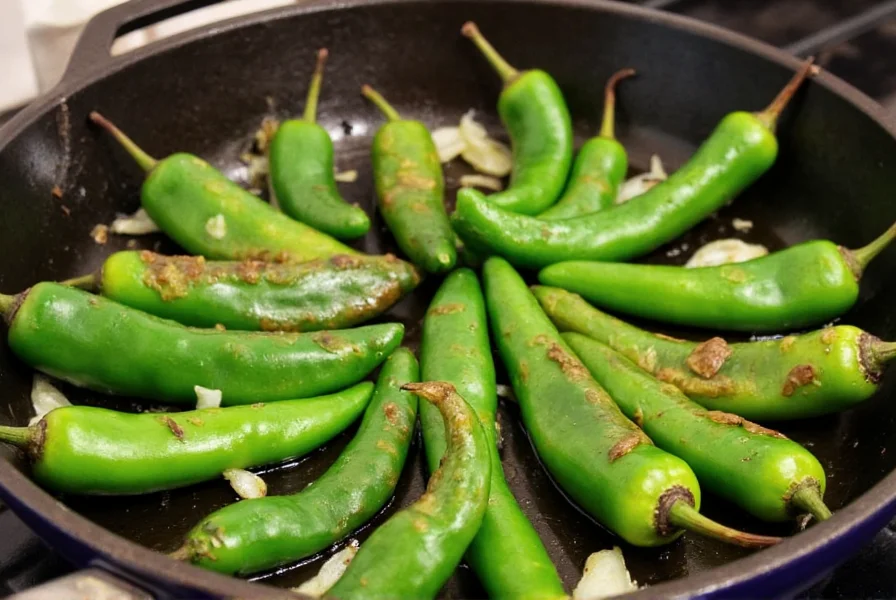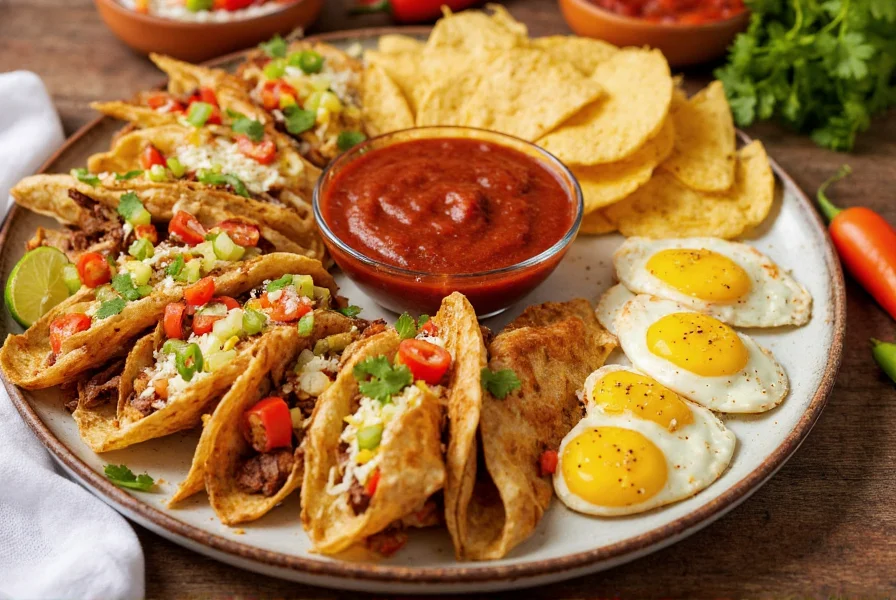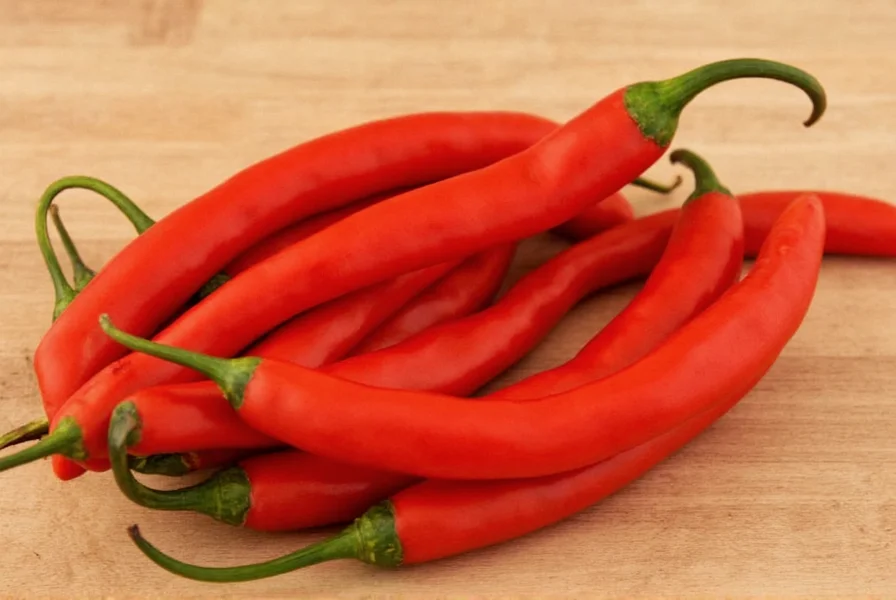The perfect serrano chili recipe features 8 fresh serrano peppers, 3 cloves of garlic, 1 cup of tomatoes, and traditional Mexican spices simmered for 20 minutes to create a vibrant, medium-heat sauce ideal for tacos, enchiladas, or as a dipping sauce. This authentic preparation balances the natural heat of serrano peppers with complementary flavors while providing clear safety tips for handling these spicy ingredients.
If you're searching for an authentic serrano chili recipe that delivers balanced heat and rich flavor, you've found the right guide. Serrano peppers, native to Mexico's mountainous regions, pack more heat than jalapeños but less than habaneros, making them perfect for creating versatile sauces with a medium spice level. This recipe transforms fresh serrano chilies into a versatile sauce that enhances everything from breakfast eggs to dinner entrees while maintaining the pepper's distinctive grassy flavor profile.
Understanding serrano chili heat management is crucial for perfect results. These peppers typically measure 10,000-23,000 Scoville Heat Units—about double the heat of jalapeños. The secret to controlling spice levels lies in whether you include the seeds and membranes, where most capsaicin concentrates. For a milder serrano pepper recipe, simply remove these elements before cooking.
| Prep Time | Cook Time | Total Time | Servings | Heat Level |
|---|---|---|---|---|
| 15 minutes | 20 minutes | 35 minutes | 1½ cups | Medium (adjustable) |
Essential Ingredients for Authentic Serrano Chili Recipe
Quality ingredients make the difference between an ordinary and exceptional serrano chili sauce. For the best results, source fresh, firm serrano peppers with smooth skin—avoid any with wrinkles or soft spots. Here's what you'll need:
- 8 fresh serrano peppers (adjust quantity based on desired heat)
- 3 large garlic cloves, peeled
- 1 cup ripe tomatoes (Roma tomatoes work best)
- ½ white onion, roughly chopped
- 2 tablespoons fresh cilantro, chopped
- 1 lime, juiced
- ½ teaspoon cumin
- ½ teaspoon sea salt
- 2 tablespoons olive oil
- ¼ cup water or vegetable broth
Step-by-Step Preparation
Follow these detailed instructions for a flawless serrano chili recipe that balances heat and flavor:
- Prepare the peppers: Wear gloves while handling serranos to protect your skin. Remove stems and decide whether to keep seeds (for extra heat) or remove them (for milder sauce). Rinse peppers under cold water.
- Roast the ingredients: Heat olive oil in a skillet over medium heat. Add serrano peppers, garlic, and onion. Sauté for 5-7 minutes until peppers blister and soften but don't blacken. This technique preserves the fresh flavor while mellowing the heat.
- Blend the mixture: Transfer roasted ingredients to a blender. Add tomatoes, cilantro, lime juice, cumin, and salt. Blend until smooth, adding water gradually until you reach your preferred consistency.
- Simmer to perfection: Return the blended mixture to the skillet. Simmer uncovered for 15-20 minutes over low heat, stirring occasionally. This crucial step allows flavors to meld and reduces raw pepper taste.
- Final adjustment: Taste and adjust seasoning. For immediate use, let cool slightly. For deeper flavor, refrigerate overnight before serving.

Pro Tips for Perfect Serrano Chili Sauce
Mastering this serrano chili pepper recipe requires attention to detail. These professional techniques ensure consistent results:
- Heat management: For a mild serrano pepper recipe, remove all seeds and white membranes. For medium heat, keep half the seeds. For authentic heat, include everything.
- Timing matters: Never cook serrano peppers beyond 20 minutes total, as prolonged heat diminishes their distinctive grassy flavor and increases bitterness.
- Acidity balance: The lime juice isn't optional—it cuts through the heat and brightens the entire sauce. Add it after cooking to preserve its fresh flavor.
- Safety first: Always wear gloves when handling serranos and avoid touching your face. Wash all surfaces and utensils thoroughly after preparation.
Versatile Applications for Your Serrano Chili Recipe
This fresh serrano chili recipe adapts beautifully to various culinary applications. Try these serving suggestions:
- Breakfast boost: Drizzle over scrambled eggs or huevos rancheros
- Taco perfection: Use as a finishing sauce for fish tacos or carne asada
- Soup enhancement: Stir into black bean soup for added dimension
- Marinade base: Mix with olive oil and citrus for chicken or shrimp marinades
- Dipping sauce: Thin with additional lime juice for a perfect chip dip

Storage and Preservation Techniques
Proper storage maintains your serrano chili recipe's freshness and flavor:
- Refrigeration: Store in an airtight container for up to 1 week. The flavors actually improve after 24 hours as ingredients meld.
- Freezing: Pour into ice cube trays, freeze, then transfer cubes to freezer bags. Keeps for 6 months—perfect for single servings.
- Canning: For longer preservation, process in sterilized jars using proper canning techniques (pH testing recommended).
Common Mistakes to Avoid in Serrano Pepper Recipes
Even experienced cooks make these errors with serrano chili recipes:
- Overcooking: Extended cooking destroys the fresh pepper flavor—keep total cooking time under 20 minutes
- Improper heat management: Not wearing gloves or touching face after handling peppers
- Skipping the roasting step: Raw serranos have an unpleasant grassy taste that roasting eliminates
- Using old peppers: Stale serranos lose flavor complexity and develop bitterness
Frequently Asked Questions
How does serrano chili heat compare to other peppers?
Serrano peppers range from 10,000-23,000 Scoville Heat Units, making them about 2-4 times hotter than jalapeños but significantly milder than habaneros (100,000-350,000 SHU). Their heat is more immediate and sharp compared to the slower-building heat of jalapeños, with distinctive grassy, herbal notes that distinguish them from other chili varieties.
Can I substitute serrano peppers in this recipe?
Yes, but with adjustments. For similar heat, use 2 jalapeños for every serrano (removing seeds from jalapeños). For closer flavor match, combine jalapeños with a small amount of cayenne. Avoid hotter substitutes like Thai chilies unless you significantly reduce quantity. Remember that each pepper variety has unique flavor compounds that affect the final sauce profile.
Why does my serrano chili sauce taste bitter?
Bitterness typically comes from overcooking the peppers (beyond 20 minutes total) or burning them during roasting. Serranos contain compounds that turn bitter with prolonged heat exposure. To fix bitter sauce, add ¼ teaspoon of sugar or honey and the juice of half an orange to balance flavors. For future batches, reduce cooking time and maintain medium heat during roasting.
How can I reduce the heat in my serrano chili recipe?
To reduce heat in your serrano pepper recipe, remove all seeds and white membranes before cooking. You can also add dairy elements like 2 tablespoons of Mexican crema or sour cream when serving. For the sauce itself, incorporate acidic elements (extra lime juice) or sweet components (¼ cup pineapple juice) which counteract capsaicin perception. Remember that cooling effects are temporary—these ingredients modify your perception of heat rather than removing capsaicin.











 浙公网安备
33010002000092号
浙公网安备
33010002000092号 浙B2-20120091-4
浙B2-20120091-4